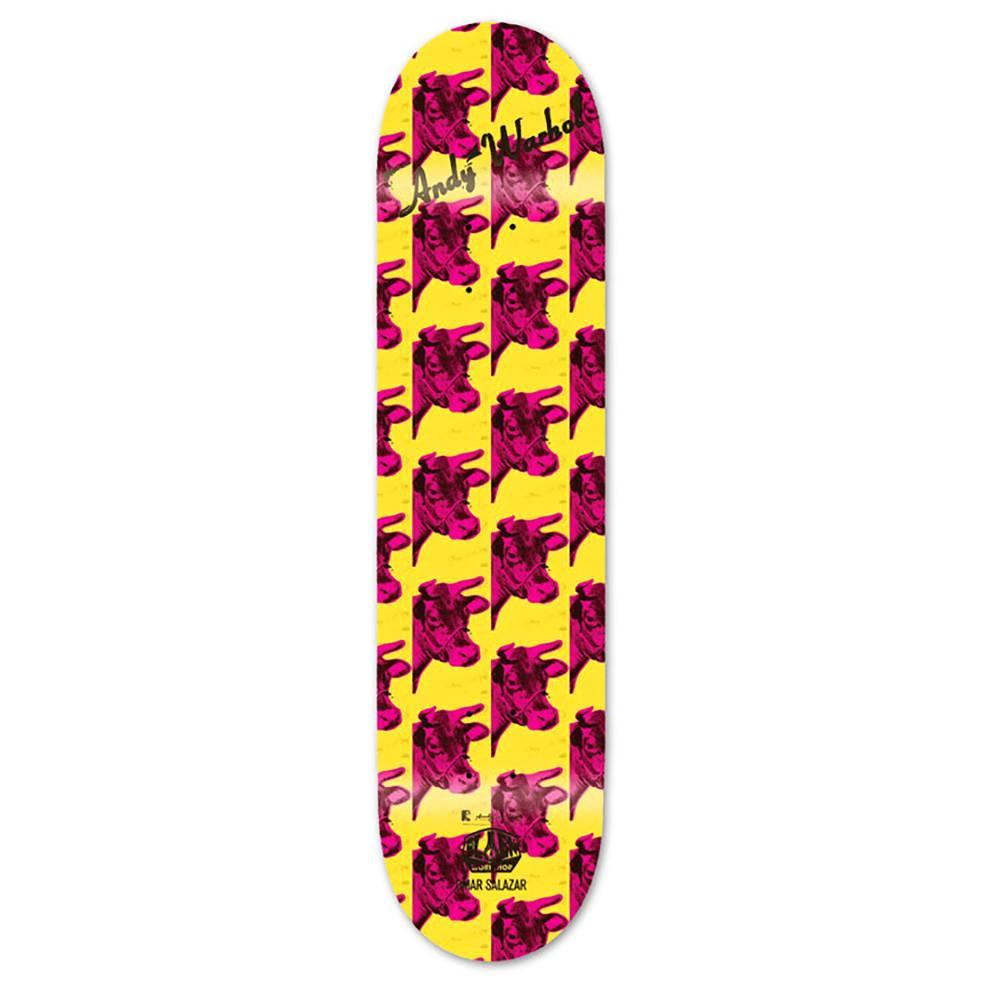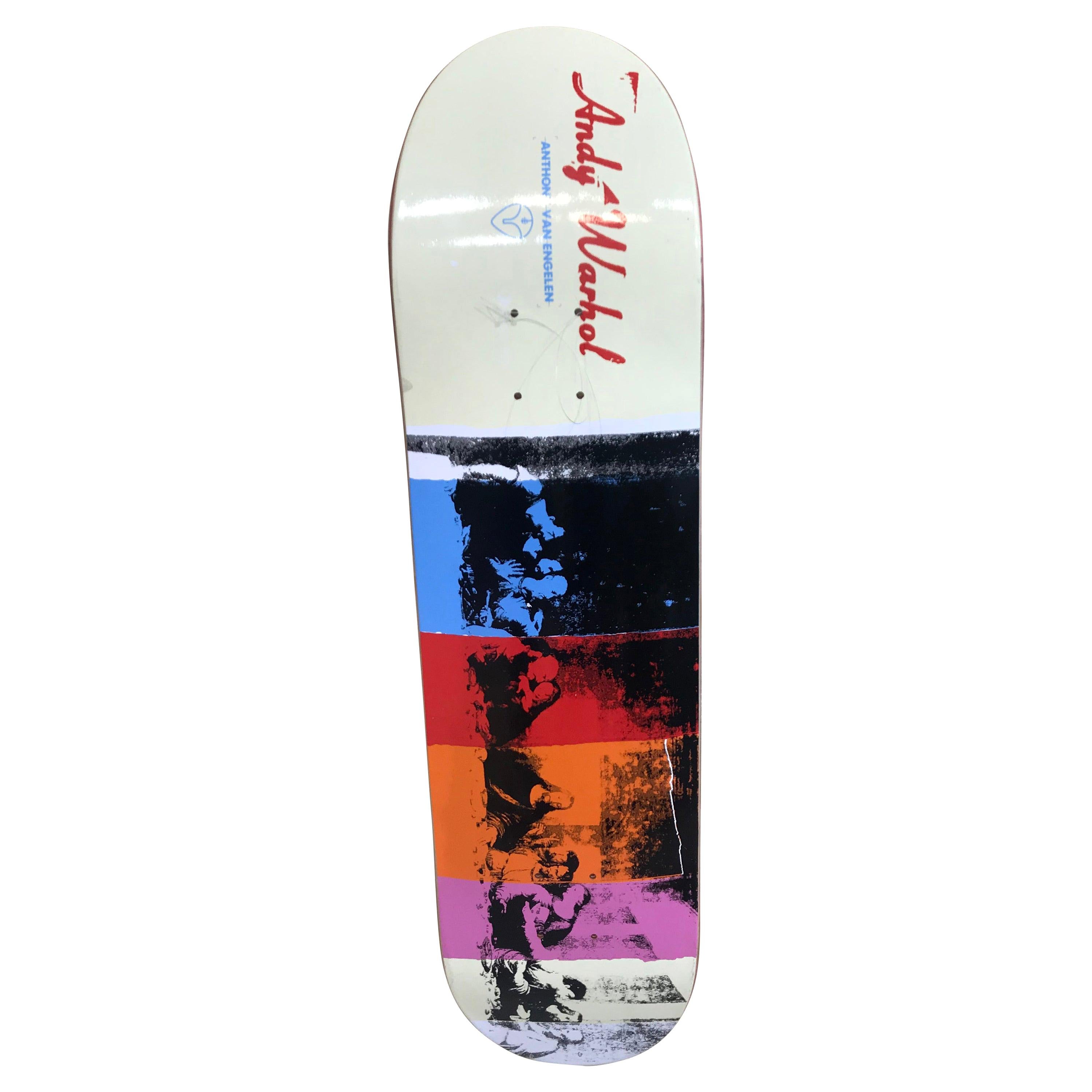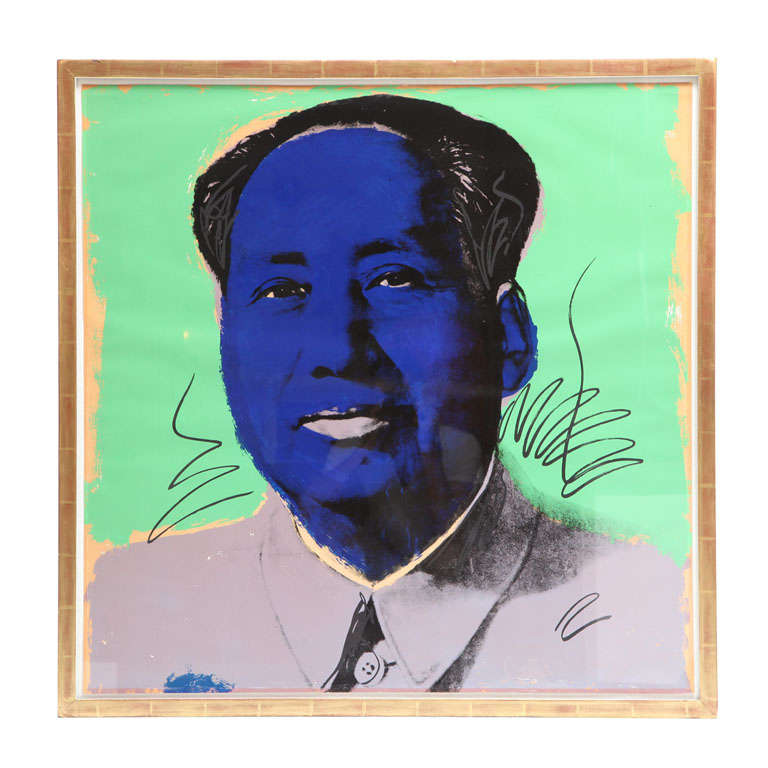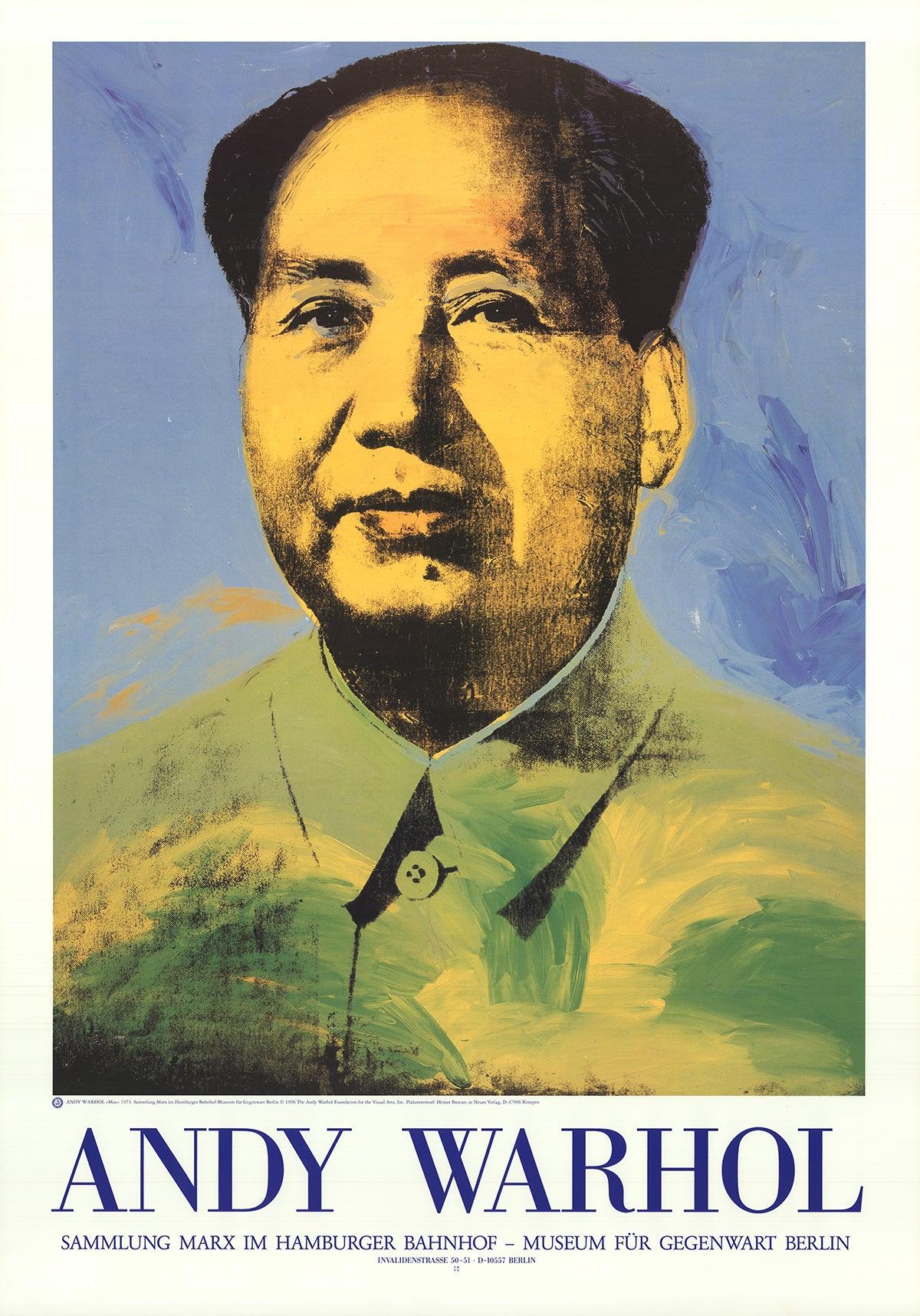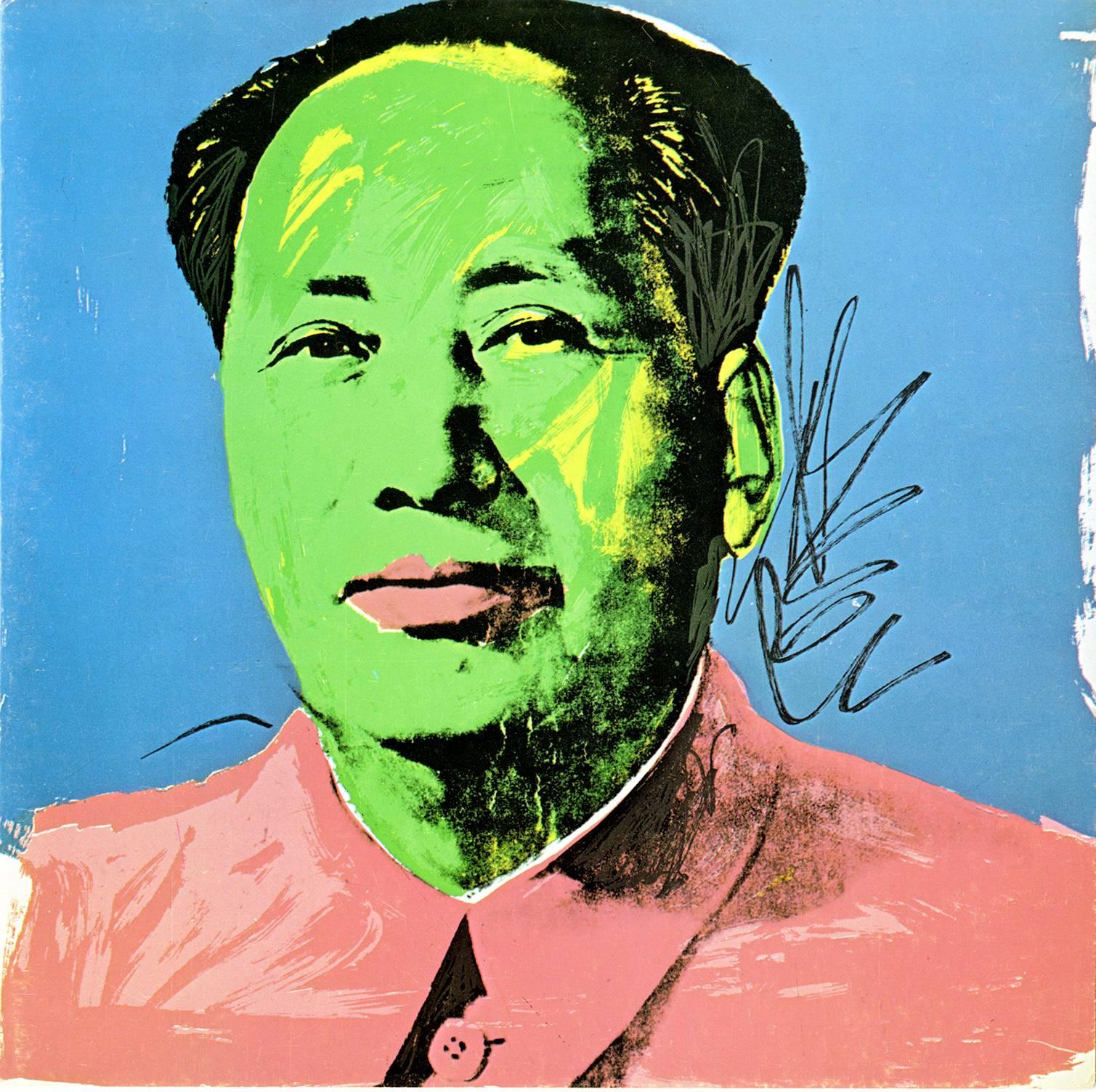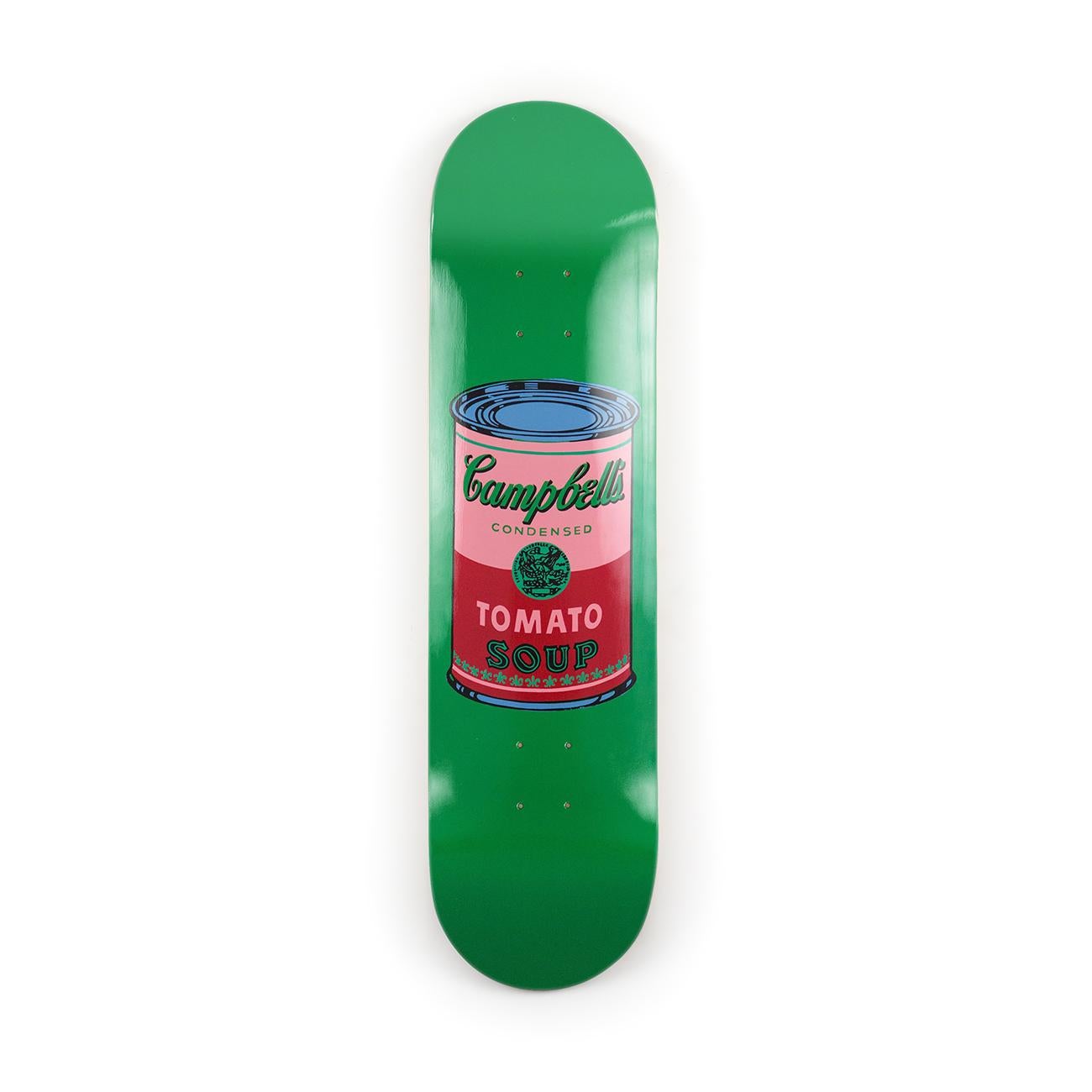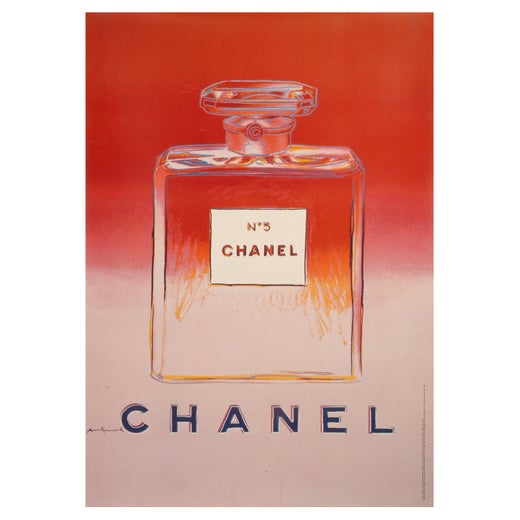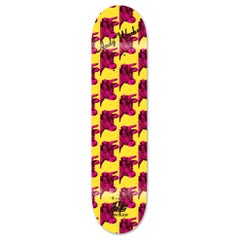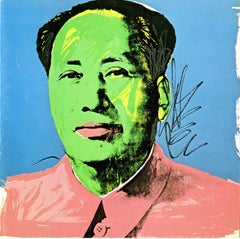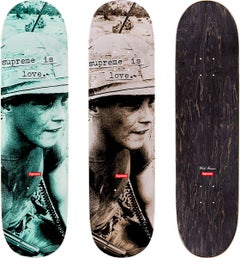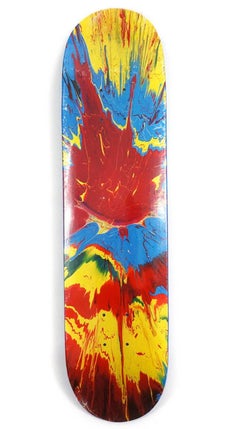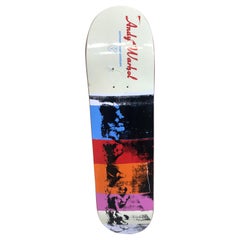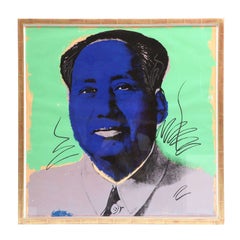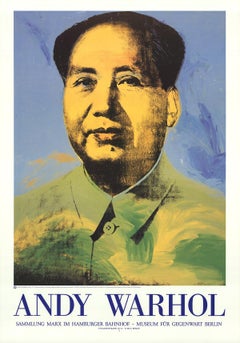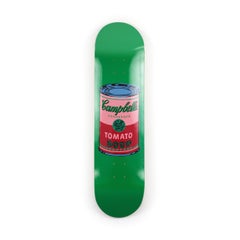Items Similar to Andy Warhol Mao Skateboard Deck
Want more images or videos?
Request additional images or videos from the seller
1 of 6
(after) Andy WarholAndy Warhol Mao Skateboard Deckc.2012
c.2012
$495
£375.43
€431.19
CA$709.16
A$780.73
CHF 399.03
MX$9,318.20
NOK 5,080.53
SEK 4,754.24
DKK 3,220.75
About the Item
Rare Out of Print Andy Warhol Mao Skateboard Deck circa 2012.
A highly decorative estate licensed skate art piece which originated circa 2012 as a result of the collaboration between Alien Workshop and the Andy Warhol Foundation. A brilliant piece of pop art that makes for unique wall-art that hangs with ease.
Medium: Silkscreen on maple wood skateboard deck.
Dimensions: 8.0 x 31 inches (20.5 x 79 cm)
Excellent overall vintage condition. Housed in original shrink-wrapping.
Estate of Andy Warhol trademark on the reverse.
"Warhol showed a great deal of interest in the Chinese political situation in 1971: 'I have been reading so much about China. They’re so nutty. They don’t believe in creativity. The only picture they ever have is of Mao Zedong. It’s great. It looks like a silkscreen'. The following year he created a portrait of the communist leader based on a photograph from his famous Little Red Book – ‘The thoughts of Chairman Mao’. Like many of his 1970s portraits, Warhol’s Mao paintings are much more painterly than his Pop works of the 1960s with strong, colourful brushwork clearly visible. This poster is for a Warhol exhibition at the Hokin Gallery, Chicago. The show opened in 1977, the year the Cultural Revolution in China officially ended following Mao’s death in 1976." (source: Tate)
- Creator:(after) Andy Warhol (American)
- Creation Year:c.2012
- Dimensions:Height: 31 in (78.74 cm)Width: 8 in (20.32 cm)
- Medium:
- Movement & Style:
- Period:
- Condition:New/unopened in its original packaging.
- Gallery Location:NEW YORK, NY
- Reference Number:1stDibs: LU354315267142
(after) Andy Warhol
Since 1960 American artist Andy Warhol (1928-1987) has been considered one of the most well known and controversial artists in American Pop Art, having becoming synonymous with Pop Art itself. His works explore the relationship between artistic expression, celebrity culture, and advertising that flourished by the 1960s, and span a variety of media, including painting, silkscreening, photography, film and sculpture. Warhol used common images of popular media that were executed with hardline realism, and were considered new and outrageous. Andy Warhol is considered to be the #1 top performing artists on the art market today, comprising a sizable chunk of the contemporary art market. Born and raised in Pittsburgh, Warhol initially pursued a successful career as a commercial illustrator. After exhibiting his work in several galleries in the late 1950s, he began to receive recognition as an influential and controversial artist. His New York studio, The Factory, became a well-known gathering place that brought together distinguished intellectuals, drag queens, playwrights, Bohemian street people, Hollywood celebrities, and wealthy patrons. He promoted a collection of personalities known as Warhol Superstars, and is credited with coining the widely used expression "15 minutes of fame."
About the Seller
5.0
Vetted Professional Seller
Every seller passes strict standards for authenticity and reliability
Established in 2014
1stDibs seller since 2016
4,581 sales on 1stDibs
Typical response time: <1 hour
- ShippingRetrieving quote...Shipping from: New York, NY
- Return Policy
Authenticity Guarantee
In the unlikely event there’s an issue with an item’s authenticity, contact us within 1 year for a full refund. DetailsMoney-Back Guarantee
If your item is not as described, is damaged in transit, or does not arrive, contact us within 7 days for a full refund. Details24-Hour Cancellation
You have a 24-hour grace period in which to reconsider your purchase, with no questions asked.Vetted Professional Sellers
Our world-class sellers must adhere to strict standards for service and quality, maintaining the integrity of our listings.Price-Match Guarantee
If you find that a seller listed the same item for a lower price elsewhere, we’ll match it.Trusted Global Delivery
Our best-in-class carrier network provides specialized shipping options worldwide, including custom delivery.More From This Seller
View AllAndy Warhol Cow Skate Deck 2010
By (after) Andy Warhol
Located in NEW YORK, NY
Vintage Andy Warhol Cow Skateboard Deck:
This work originated circa 2010 as a result of the collaboration between Alien Workshop and the Andy Warhol Foundation. A brilliant piece of...
Category
1960s Pop Art More Art
Materials
Offset, Wood
Andy Warhol Mao 1972 announcement (Andy Warhol Leo Castelli gallery)
By (after) Andy Warhol
Located in NEW YORK, NY
Andy Warhol Leo Castelli Gallery 1972:
Leo Castelli gallery released this colorful, highly collectible 1970s Andy Warhol Mao announcement card in ...
Category
1970s Pop Art More Art
Materials
Lithograph, Offset
Supreme skateboard decks set of 2 works (Supreme New York)
By Supreme
Located in NEW YORK, NY
Supreme Skateboard Decks, 2019 (set of 2 works):
A standout Supreme skateboard deck set featuring the Supreme logo and a printed World Famous logo on front. Strong vibrant colors and classic imagery that combines for unique pop wall art that hangs with ease.
Medium: Silkscreen on Maple Wood. 2019.
Dimensions: 31.5 x 8 in. (applies to each individual work).
Printed Supreme logo on front & reverse (applies to each).
New in original packaging, excellent overall condition.
Provenance: Acquired directly from Supreme New York.
From a sold out limited edition of unknown.
Related Categories
Damien Hirst. Andy Warhol. Supreme. 1980s Pop Art. Street Art. Skate Art.
Category
21st Century and Contemporary Pop Art Prints and Multiples
Materials
Wood, Screen
Damien Hirst Supreme Skateboard Deck
By Damien Hirst
Located in NEW YORK, NY
Damien Hirst Spin Series Skate Deck, Supreme 2009
Medium: Screenprint in colors on polychrome wood skateboard deck.
Dimensions: 31.1 x 7.68 in (78.99 x 19.51 cm).
Stamped signatur...
Category
1990s Pop Art More Art
Materials
Wood, Screen
Price Upon Request
Jean-Michel Basquiat skateboard decks 2020 (Basquiat Angel)
By Jean-Michel Basquiat
Located in NEW YORK, NY
Jean-Michel Basquiat skateboard deck set:
Basquiat skateboard decks licensed by the Estate of Jean Michel Basquiat in conjunction with Artestar circa 2020, featuring offset imagery o...
Category
2010s Pop Art More Art
Materials
Wood, Offset
Damien Hirst Supreme Skateboard Deck
By Damien Hirst
Located in NEW YORK, NY
Damien Hirst Spin Series Skate Deck, Supreme 2009
Medium: Screen print in colors on polychrome wood skateboard deck.
Excellent overal condition.
Dimensions: 31.1 x 7.68 in (78.99 x 19.51 cm).
Stamped signature and Supreme logo on reverse.
"Hirst first experimented with spin art in 1992 at his studio in Brixton (‘Beautiful Ray of Sunshine on a Rainy Day Painting and Beautiful Where Did All The Colour Go Painting’ (1992). The following year, he set up a spin art stall with fellow artist Angus Fairhurst at Joshua Compston’s artist led street fair, ‘A Féte Worse than Death’. Made up as clowns by performance artist Leigh Bowery, Fairhurst and Hirst invited visitors to pay £1 to create their own spin paintings to be signed by the pair, (and another £1 to drop their trousers and reveal their painted cocks and bollocks!)
The spin paintings are characterised by the works’ elongated titles, which begin with ‘Beautiful’ and end in ‘painting’, and their bright colours. The series began in earnest in 1994, when Hirst had a spin machine made whilst living in Berlin. A series of his machine-made spin drawings were subsequently exhibited at Bruno Brunnet Contemporary Fine Arts, Berlin, later that year. The exhibition ‘making beautiful drawings: an installation’, invited visitors to the gallery to make their own free drawings on a spin drawing machine made from a drill. The first Berlin-made spin painting exhibited was ‘Beautiful, pop, spinning ice creamy, whirling expanding painting’ (1995), at the Waddington Gallery, London, in 1995." (source: Damien Hirst site)
Related Categories:
Damien Hirst spin. Damien Hirst abstract. Damien Hirst skateboard...
Category
1990s Pop Art Prints and Multiples
Materials
Wood, Screen
Price Upon Request
You May Also Like
Leonard de Vinci & Andy Warhol Skate
Located in Saint Ouen, FR
Leonard de Vinci & Andy Warhol skate
New but not wrapped in plastic
Plate signed
390 €.
Category
Early 2000s Abstract Sculptures
Materials
Other
Andy Warhol "MAO"
By Andy Warhol
Located in West Palm Beach, FL
Andy Warhol "Mao"
Color Screen Print
Printed at Styria Studio Inc.
Catalogue raisone Feldman/Schellman,90
Signed and Stamped to verso
AP 25/50
Category
20th Century American Prints
Materials
Paper
Price Upon Request
Andy Warhol 'Mao' Pop Art Vintage
By Andy Warhol
Located in Brooklyn, NY
This poster reproduces Andy Warhol's iconic image of Mao Zedong. Created in 1996, the poster coincides with the re-opening of the Hamburger Bahnhof (Train Station) after its renovati...
Category
1990s Pop Art Prints and Multiples
Materials
Offset
$200 Sale Price
20% Off
ANDY WARHOL - COLORED CAMPBELL'S SOUP BLOOD Skate Deck Pop Art Modern Design
By Andy Warhol
Located in Madrid, Madrid
after Andy Warhol Colored Campbell's Soup - Blood
Date of creation: 2019
Medium: Digital print on Canadian maple wood
Size: 80 x 20 cm
Condition: In mint conditions and never display...
Category
2010s Pop Art More Art
Materials
Wood, Maple, Screen
Mao (Wallpaper)
By Andy Warhol
Located in Boston, MA
Artist: Warhol, Andy
Title: Mao (Wallpaper)
Date: 1974
Medium: Screenprint on wallpaper
Unframed Dimensions: 40.125" x 29.5"
Framed Dimensions: 45.25" x 34.5"
Signature: Unsig...
Category
1980s Pop Art Prints and Multiples
Materials
Screen
Skateboard set
By Andy Warhol
Located in Washington , DC, DC
Skateboards made in conjunction with the Estate of Andy Warhol
Category
21st Century and Contemporary Contemporary Prints and Multiples
Materials
Screen, Wood
$2,850
